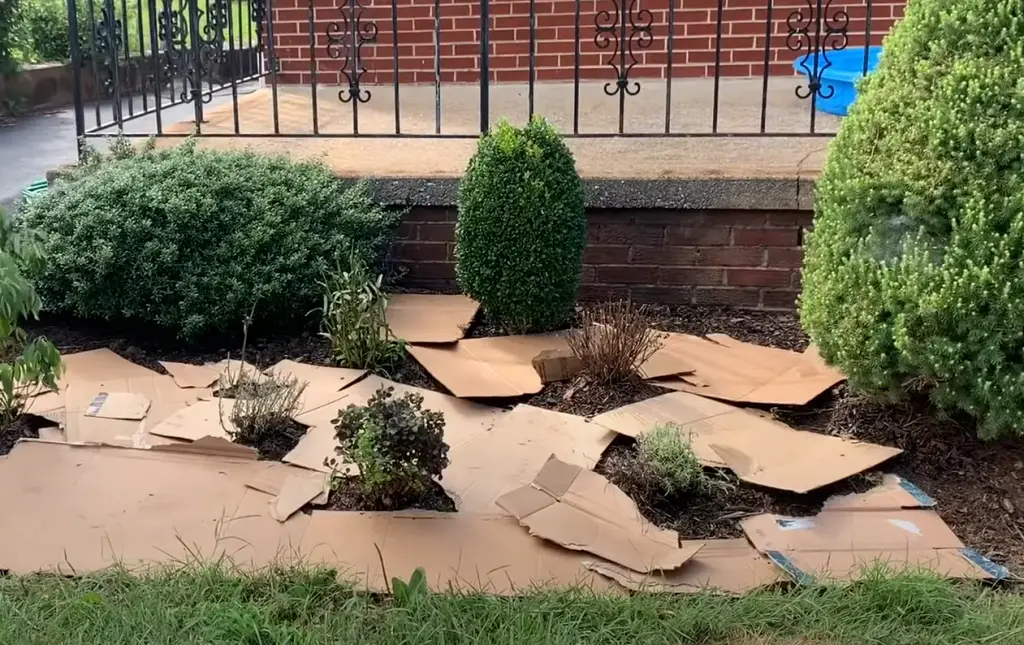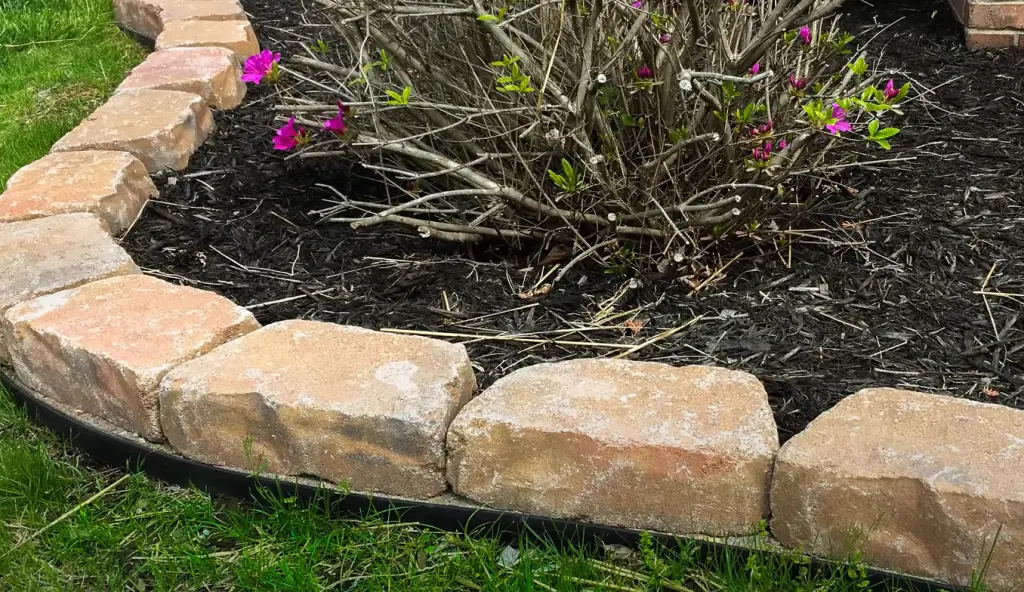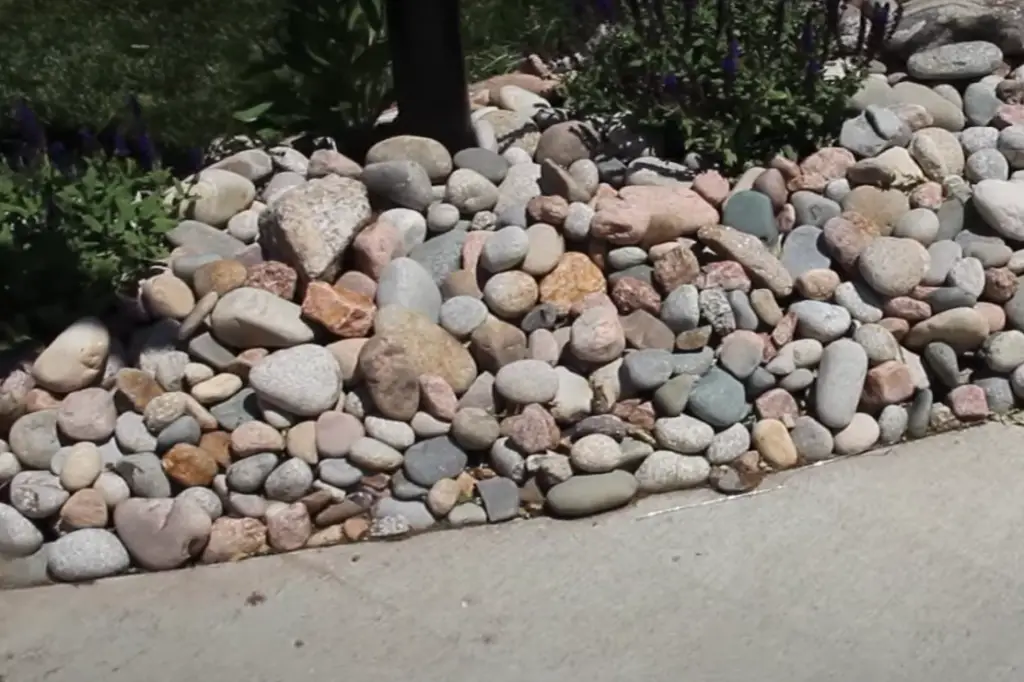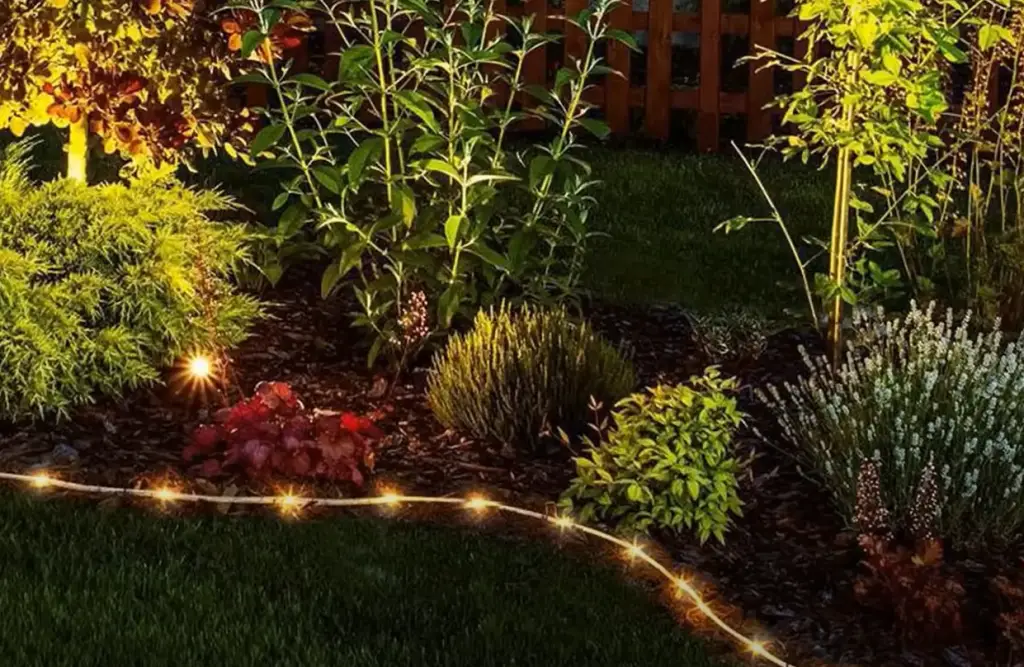Are you looking for a way to add an eye-catching and low-maintenance touch of beauty to your garden? One alternative option to traditional mulch is lining flower beds with rocks. Not only are rocks aesthetically pleasing, but they help conserve water, support drainage and soil stability, and can ward off weeds too. In this blog post we’ll discuss the workflow behind planting flower beds with rocks instead of mulch – from selecting the right material and how much rock you’ll need to tips on design patterns that will bring stunning results. Plus, get ready for quick installation due to easy maneuverability! Read on to find out more about this creative planting alternative!
Benefits of Planting Flower Beds with Rocks Instead of Mulch
Improved Soil Drainage
Rocks provide improved soil drainage and help keep the flower bed area from becoming too wet. This helps to reduce the risk of root rot and other diseases associated with overly saturated soils.
Reduced Weeds and Maintenance
Rocks can also provide a useful barrier against weeds, as they are more difficult to penetrate than mulch. This means you can spend less time weeding and more time enjoying your flowerbed. Plus, rocks require far less maintenance than mulch; they don’t need to be reapplied or replaced yearly.

Rocks stay in place for years with minimal fuss, allowing you to enjoy your garden without worrying about the upkeep. Using rocks instead of mulch for flower beds can be a great option for busy gardeners with limited time, as it requires less maintenance.
Versatile Design Possibilities
Rocks can be used instead of mulch for flower beds to give your garden a distinctive and fashionable appearance. Rocks come in a variety of colors, sizes, shapes, and textures, so you can easily create interesting designs or patterns that will add an unexpected twist to your flower bed. With the right combination of rocks, you can create visual interest while also reducing weeds and maintenance. [1]
Cost-Effective Option
Rocks are more expensive than mulch upfront; however, they offer significant cost savings over time due to their minimal upkeep requirements. By using rocks instead of mulch for your flower bed, you’ll save money on regular reapplication or replacement costs associated with other types of mulch.
In conclusion, there are many benefits of using rocks instead of mulch for flower beds. Rocks provide a barrier against weeds, require less maintenance, offer versatile design possibilities, and are more cost-effective in the long run. If you’re looking for a low-maintenance way to spruce up your garden, consider opting for rocks instead of mulch. With the right combination of rocks, you can create an attractive and unique flower bed that will last for years to come.
Preparing the Soil for Rock Garden Bed Plantings
Selecting a Location
The selection of the right location for a rock garden bed is very important for its success. Selecting an area with good drainage and plenty of sunlight will help plants to grow better.
Testing Your Soil pH Level
Before you begin planting flower beds with rocks instead of mulch, it’s important to test your soil pH level.
If the soil is too acidic (a low pH), then adding limestone can raise the pH and create an environment better suited for flowers to grow in. You can purchase kits from garden centers that allow you to take a sample of your soil and test its pH levels.
This will tell you what kind of amendments, if any, are needed before you plant your flower beds with rocks instead of mulch. After any amendments have been made according to the results of your soil testing, you’ll be ready to begin planting. [2]
Adding Compost to the Soil
In addition to testing the soil pH, adding compost can also help create a nutrient-rich environment for your flower beds with rocks instead of mulch. Compost contains microorganisms that are essential for helping plants thrive and grow. You can purchase bags of compost from garden centers or you can make your own by collecting and breaking down organic material such as vegetable scraps, leaves, grass trimmings, or even shredded newspaper. Once you’ve collected enough materials, you should mix them together in a pile with water and let them sit for several weeks until they have broken down into a dark rich substance. Then simply spread this over your soil before planting any flowers in your rock-lined flower bed.
Pre-Mixed Potting Soils for Container Plantings
For container plantings, you can purchase pre-mixed potting soils that are specially formulated for this type of gardening. The bag should indicate what types of nutrients the soil contains and provide instructions on how much to use per container. Before planting your flower beds with rocks instead of mulch, be sure to mix the potting soil into the existing soil in each container to create a nutrient-rich environment for your flowers.
Choosing Rocks for Flower Beds
Decorative Stones and Pebbles
When deciding which rocks to use in your flower beds, you will have a variety of options. Decorative stones and pebbles are a great way to create an attractive look. Popular choices for decorative stone include river rock, fieldstone, cobblestone, and rock mulch. These types of rocks can be found in most garden centers or home improvement stores.
Larger Rocks for a Rock Garden Bed
For a more natural look, consider using larger rocks for your flower beds. These can be used to create a rock garden bed. You may want to select rocks of different sizes and colors, or pick ones that are all the same size. You will also need to make sure the stones are large enough so they don’t sink into the dirt when it rains. [3]
Flagstone Stepping Stones
For a more unique look, you could use flagstone stepping stones for your flower beds.

This type of stone has a natural weathered look that adds texture and interest to the garden. The stones should be chosen based on their size, shape, and pattern in order to create an aesthetically pleasing arrangement in your flower bed.
Adding Gravel or Sand to the Mix
In addition to the rocks, you may also want to consider adding gravel or sand into the mix. The gravel or sand will provide an additional layer of protection for your plants and help keep the soil in place when it rains. It is important to note that if you are using flagstone stepping stones, they should be laid on top of a bed of gravel or sand before being placed in the flower beds.
By choosing carefully and combining different types of rocks with other elements such as gravel or sand, you can create beautiful and unique flower beds that will last for many years. Rocks make a great choice for flower beds since they require minimal maintenance and offer good drainage properties, which will allow your plants to thrive.
Planting in a Rock Garden Flower Bed
Using rocks instead of mulch to plant a flower bed is an easy way to create a beautiful garden. Rock gardens are becoming increasingly popular as they require minimal maintenance, offer a low-cost alternative to regular flower beds, and create a unique aesthetic. The best part is that you can use any type of rock you’d like, from pea gravel or river stones to larger landscaping boulders. Here are some tips for creating a rock garden flower bed:
- Start with the Layout: Before planting your flowers and plants, determine where you want them and how they will fit in with the overall look of the surrounding area. It’s important not to overcrowd the space; instead, focus on using different heights and shapes of plants to create an interesting and eye-catching display.
- Prepare the Soil: Proper soil preparation is key for any flower bed, but especially important for a rock garden. Use a tiller or shovel to loosen the soil and add organic matter such as manure or compost. This will help ensure that your plants have enough nutrients to thrive. [4]
- Add Rocks: Once you’ve laid out your layout and prepped the soil, it’s time to add the rocks! Arrange them in whatever patterns and designs you like; just make sure they aren’t too close together so that your plants can still get plenty of sunlight. For larger projects, consider using landscaping fabric underneath the rocks to help prevent weeds.
- Plant Your Flowers and Plants: Now that you’ve created a stunning rock garden, it’s time to add the final touches. Choose plants that will thrive in your climate and soil type; succulents and cacti are especially good for hot, dry regions. Be sure to water them regularly so they can flourish in their new home!

Creating a rock garden flower bed is an easy way to add beauty and life to any outdoor space.
Selecting Plants for Your Rock Garden Flower Bed
When you are planting a rock garden flower bed, it is important to select plants that will thrive in the environment. A dry and sunny location with plenty of drainage is ideal for rock garden beds, so look for plants that require little water and can tolerate partial shade. Succulents, cacti, and other drought-tolerant species are great options for this type of setting. For perennials, look for those with silver foliage or silvery leaves as these tend to stand out well against the dark rocks. Also consider evergreen shrubs to provide structure to your design.
Once you have selected your plants, it is important to provide them with extra nutrition from compost or fertilizer when necessary. Adding a layer of organic matter to the soil each year will help your plants stay healthy and thrive in such an environment.
Finally, remember that rocks can be very hot in the summer months and can reflect sunlight for a long period of time. This means that certain plants may need more shade or protection during this period, so make sure you choose varieties that are well-suited for sun reflection. With some careful planning and consideration of your chosen plants’ needs, your rock garden flower bed will be a beautiful addition to your landscape!
Planting Tips for Best Results
When planting flower beds with rocks instead of mulch, there are a few tips that gardeners should keep in mind for best results.
First, pick the right type of rock. River rocks and other flat stones work best as they don’t take up much space and allow water to get through easily. Steer clear of gravel or larger stones, like cobblestone or brick, which can crowd out delicate flowers and make it more difficult for water to reach the roots.
Next, create a border around the perimeter of the bed using thicker stones such as bricks or pavers. This will help contain the rocks within the area you have designated for your flower bed. [5]

Finally, when placing your stones, leave some space around each plant for water and air to get through. Be sure not to place them too close together as this can also hinder the flower’s growth.
Following these tips will ensure that your rock-filled flower bed looks great and provides plenty of room for your flowers to grow and thrive!
Care and Maintenance of Your Rock Garden Flower Beds
Once your rock garden flower beds are planted, you may think that no further care is needed. However, there are a few steps you need to take to ensure the health of your plants and ensure that your rock garden flower beds look their best over time.
Because rocks do not absorb water like mulch does, it’s essential to check regularly for dryness or waterlogging in order to keep everything healthy and blooming. Watering your plants can also help them remain vibrant throughout the seasons.It’s also important to make sure that weeds don’t start popping up between the stones in your rock garden flower beds. If you notice any sprouting, you can carefully pull them out by hand or with a small trowel.
Another step to maintain your rock garden flower beds is to periodically clean the rocks. Whether you’re using gravel, river rock, or another type of material, dirt and dust will eventually accumulate over time. You can use a hose to rinse off the rocks and restore their bright colors and fresh look.
Finally, it’s important to check for any pest infestations in your plantings as well as around the edges of the stones. Early detection and treatment are key for preventing damage from pests such as slugs or snails.
By following these simple tips, you can easily keep your rock garden flower beds looking beautiful and thriving. With just a little bit of maintenance, they will provide years of enjoyment for all who visit your outdoor oasis. [6]
FAQ
Is it better to put rocks or mulch next to your house?
When it comes to planting flower beds around your home, it is generally better to use rocks instead of mulch. Rocks provide a much more permanent solution that does not require regular upkeep the way mulch does. Additionally, rocks tend to be less likely to attract pests and can provide additional drainage in areas where water may pool during rainstorms.

They also tend to stay put better than mulch, which can blow away or wash away with heavy rains. Ultimately, choosing between rocks or mulch depends on the needs and preferences of each homeowner.
What are some benefits of rock flower beds?
Using rocks to line flower beds has several benefits over using traditional mulches like wood chips or shredded bark. Rocks are very durable and can last for many years without needing to be replaced, while mulch may need to be replaced every season. Rocks also don’t attract pests the way mulch can, making them safer for plants and other wildlife in your garden. Additionally, rocks provide excellent drainage compared to mulch and help prevent water from pooling around plants. Finally, rock flower beds are aesthetically pleasing and can add a nice touch of color to any outdoor space.
What kind of rocks should I use?
When choosing rocks for your flower bed, you will want to choose ones that match the style of your home or garden. Pebbles or organic river rocks tend to be popular choices as they come in a variety of colors and sizes. Make sure to choose rocks that are medium-sized so they don’t get washed away in heavy rains or blow away in the wind. It’s also a good idea to use several different sizes and colors of rocks to create an interesting pattern for your flower bed. Above all, make sure the rocks you choose are clean and free from dirt before you lay them down.
Are there any tips for laying rock flower beds?
When creating a rock flower bed, it is important to plan ahead so that everything fits properly in the allotted space. Start by measuring the area where you want your flower bed to be and then mark off the area with stakes and string if needed. Once you have done this, dig out any excess soil or grass until the desired depth is reached. Then, start laying your rocks in the desired pattern and make sure to secure them with landscaping fabric or concrete mix as needed. Finally, add soil around any plants you want to include in your flower bed before adding water and fertilizer. Ultimately, rock flower beds can be a great way to add color and character to an outdoor space without having to worry about upkeep or pests. With proper planning and installation, you can have a beautiful rock flower bed that will last for many years.
What is the cheapest rock to use for landscaping?
One of the cheapest rocks to use for landscaping is river rock. This type of rock has a smooth and rounded texture that makes it perfect for flower beds. It comes in a variety of colors, sizes, and shapes, making it easy to find a combination that will match your garden’s aesthetic. River rocks are often much less expensive than other types of landscape rocks like flagstone or pea gravel. They also require very little maintenance since they don’t need to be replaced as often as mulch does. In addition, using river rocks instead of mulch can help reduce weeds in your garden and make it easier to keep your plants healthy. Additionally, these small stones create an attractive visual appeal that gives your flower beds a beautiful finished look. Other types of rocks that are more affordable options for landscaping include crushed stone and gravel.
Why not put mulch next to the house?
Rocks are a great option when planting flower beds near the foundation of your home. They don’t attract bugs and don’t become moldy like mulch can, so they won’t damage your siding or cause moisture problems to occur. Additionally, rocks absorb heat from the sun during the day and then slowly release that heat at night, helping to moderate temperature changes in the soil around the plants. This helps keep them healthy and growing strong! Plus, rocks come in many colors and textures, giving you lots of options for creating a unique look for your flower bed. Whether you choose river rock, colored crushed stone or pea gravel – adding these stones will create an attractive garden border that will last for years with minimal maintenance required.
Do raised beds need a bottom?
Yes. If you are using a raised bed, adding a layer of rocks at the bottom will help with drainage and provide extra protection for your plants. The rocks allow water to flow through the soil while creating a barrier against weeds and other pests. They also retain heat better than lighter mulch materials, so plants in raised beds tend to do well when lined with stones or gravel. When deciding what size and type of rock to use, make sure it’s not too large as it may prevent roots from growing properly. A general rule is to use smaller pieces that are about 3/8 inch or less in size. This will ensure proper root growth while still providing the necessary support and aeration your plants need.
Useful Video: DIY Rock Landscaping Idea | River Rock | No Fabric | Hide Trash Cans
Conclusion
Using rocks instead of mulch to landscape flower beds is a great way to spruce up outdoor spaces and create an interesting look. Rocks can provide the same advantages as mulch, such as suppressing weeds and helping retain moisture, while also adding a unique visual element. Before beginning any project, be sure to check with local regulations and consider factors such as drainage and potential for erosion. With careful planning, planting flower beds with rocks instead of mulch can add aesthetic value to any garden or lawn.
References:
- https://www.gardenerbasics.com/blog/flower-beds-with-rocks-instead-of-mulch
- https://www.homesandgardens.com/gardens/using-rocks-instead-of-mulch
- https://www.levelgreenlandscaping.com/blog/rock-vs-mulch-in-planting-beds-things-to-consider
- https://www.familyhandyman.com/article/pros-and-cons-of-rock-flower-beds/
- https://www.msisurfaces.com/blogs/post/2022/06/27/pros-and-cons-of-using-garden-rock-in-flower-beds.aspx
- https://biggerthanthethreeofus.com/landscaping-rock-instead-mulch/










Leave a Reply
View Comments